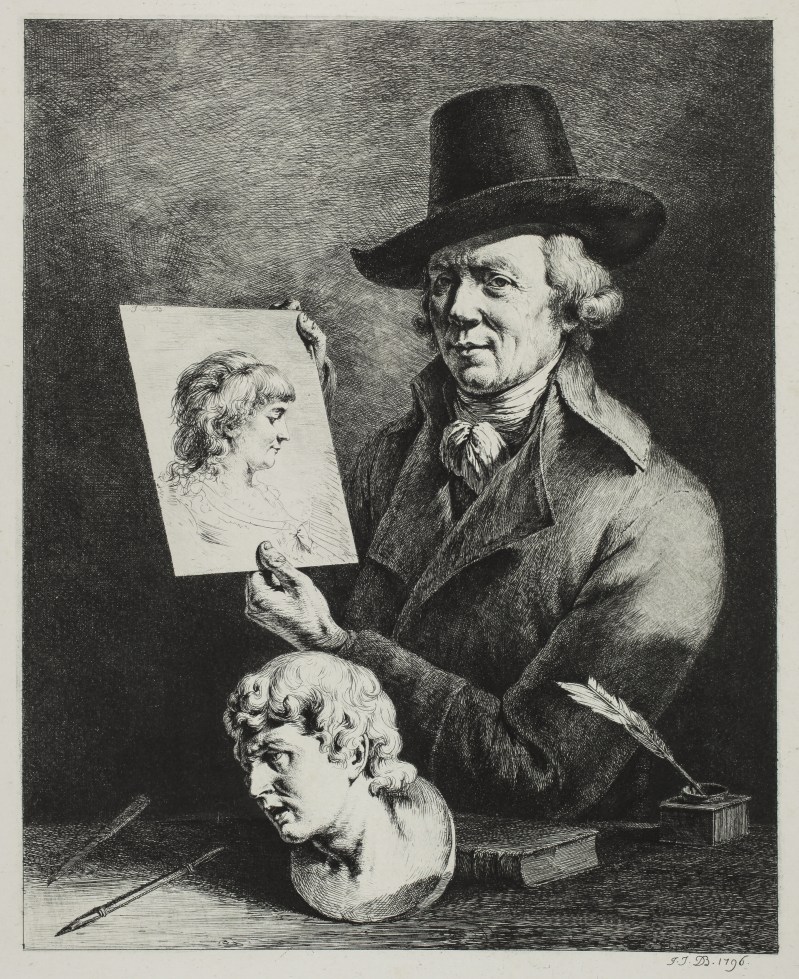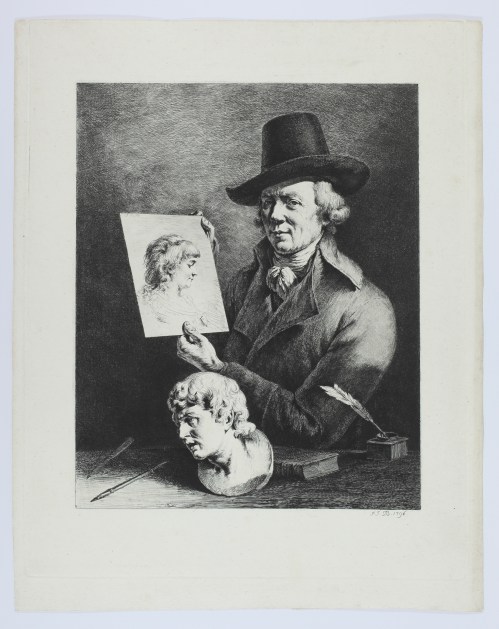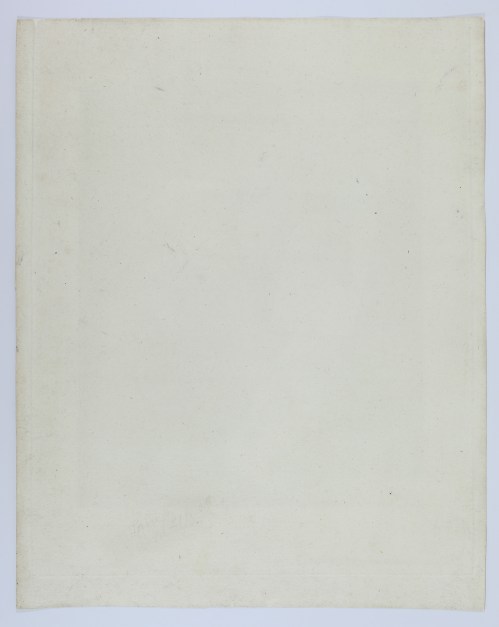Jean-Jacques de BOISSIEU: Jean-Jacques de Boissieu. Portrait of the Artist - 1796.
SOLD
Etching, 377 x 298 mm. Boissieu-Perez 102, 4th state (of 8).
Impression of the 4th state (of 8) before the portrait of Boissieu’s wife was replaced by a landscape.
Very fine impression printed on laid paper, trimmed on the platemark at the top and with small margins on the other sides (sheet: 400 x 318 mm). In very fine condition.
While impressions of the 4th state of this Portrait of the Artist are rare, those of the first three states are almost impossible to find. The impressions of the 1st state are pure etchings (we know of only three impressions, including the one presented on our site); in the impressions of the 2nd state, Boissieu added slight shading with roulette and drypoint; in the 3rd state, he made changes to the shading on the upper left arm. The only difference between the proofs of the 4th state and those of the 3rd state is the removal of the bite marks of the vices in the copperplate margins. The vices were used to fix the plate so that it could be engraved more easily.
"This is Jean-Jacques de Boissieu's most famous print. The printmaker, dressed in a neat suit, has surrounded himself with his tools, a partial cast of the Laocoon, a book and a quill dipped in the inkwell, like so many coats of arms of his profession and culture. While watching out for the amateur, he exhibits a copperplate that underwent spectacular changes: from a portrait of his wife, he soon moved on to a landscape with cows, certainly more typical of his production”. The author adds that the hypothesis that his wife had died during the Revolution is incorrect, since Madame de Boissieu did not die until 1834, twenty-four years after him. (Boissieu-Perez, 1994, p. 227, translated by us).
References: Marie-Félicie Perez: L’œuvre gravé de Jean-Jacques de Boissieu, 1736-1810, Genève, Cabinet des Estampes, 1994 (this catalogue takes up and completes the Catalogue raisonné published in 1878 by Alphonse de Boissieu).





